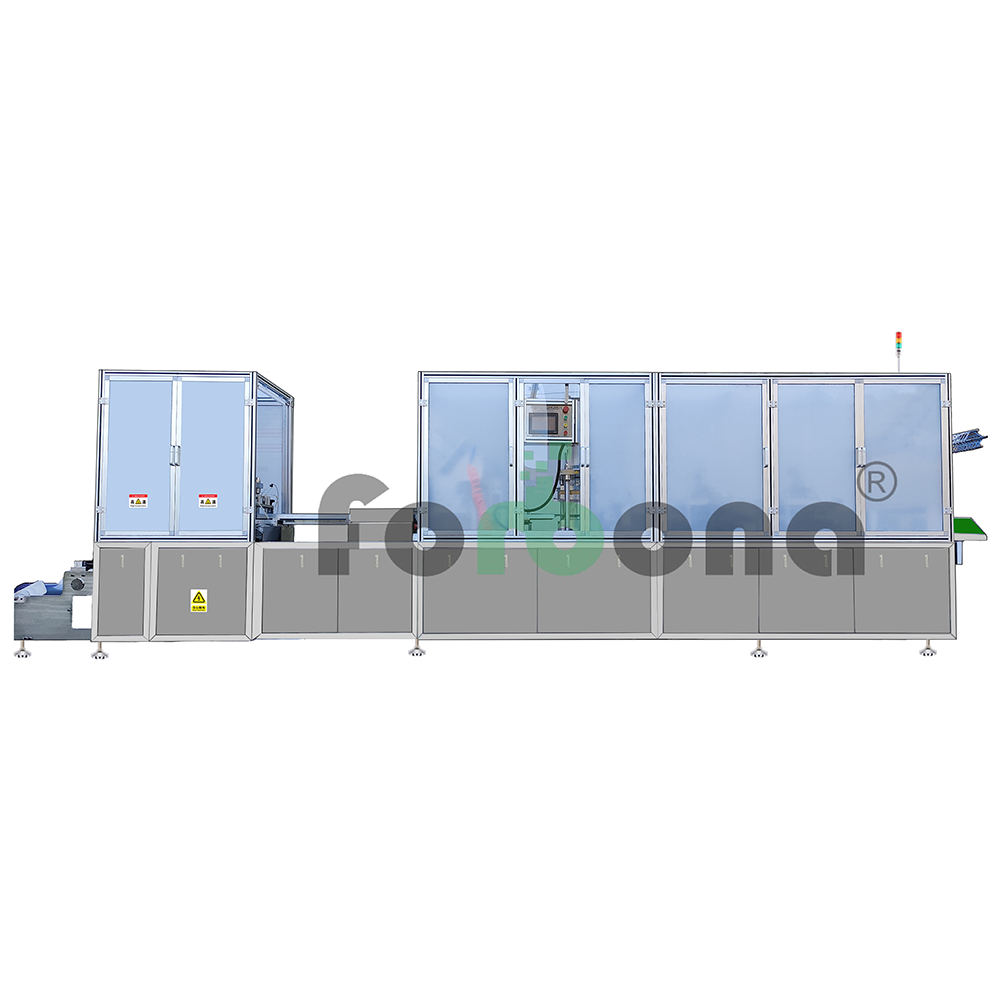Email format error
Email cannot be empty
Email already exists
6-20 characters(letters plus numbers only)
The password is inconsistent
Email format error
Email cannot be empty
Email does not exist
6-20 characters(letters plus numbers only)
The password is inconsistent


How Does a Blister Packaging Machine Work?
Blister packaging machines are essential in industries like pharmaceuticals, food, and consumer goods, providing efficient and secure packaging solutions. These machines create protective, visually appealing packages by forming cavities (blisters) from plastic or aluminum films and sealing them with lidding materials. But how exactly do they work? In this blog, we’ll dive into the working principles, key components, and operational stages of blister packaging machines, offering a detailed understanding for manufacturers, engineers, and industry enthusiasts.
What is a Blister Packaging Machine?
A blister packaging machine is a specialized device used to package products in pre-formed cavities made from plastic or aluminum films. These cavities are sealed with lidding materials, such as aluminum foil or paper, to protect the product from external factors like moisture, contamination, and physical damage. Blister packaging is widely used for tablets, capsules, medical devices, and small consumer goods due to its durability, tamper-evidence, and cost-effectiveness.

Key Components of a Blister Packaging Machine
-
Film Unwinding System
This system feeds the base film (PVC, PVDC, or aluminum) into the machine. The film is typically stored on a roll and unwound as needed. -
Heating Station
The base film is heated to a specific temperature (usually between 120°C and 220°C) to make it pliable for forming. Precise temperature control ensures uniform thickness and well-defined cavities. -
Forming Station
The heated film is molded into cavities using either vacuum forming, pressure forming, or mechanical forming. The shape and size of the cavities depend on the product being packaged. -
Product Feeding System
Products are fed into the formed cavities using vibratory feeders, conveyor belts, or robotic arms. This stage requires high precision to ensure accurate placement. -
Sealing Station
The lidding material (aluminum foil or paper) is sealed onto the formed cavities using heat and pressure. Rotary sealing is commonly used for high-speed operations, while platen sealing is preferred for complex shapes. -
Punching and Cutting Station
The sealed blister packs are cut into individual units using a punching mechanism. This stage ensures clean edges and consistent package sizes. -
Control System
Modern blister packaging machines are equipped with advanced control systems, including PLCs and touchscreen interfaces, to monitor and adjust parameters like temperature, speed, and pressure.
How Does a Blister Packaging Machine Work?
-
Film Feeding and Heating
The base film is unwound from the roll and passed through a heating station, where it is softened to prepare for forming. -
Cavity Formation
The heated film is transferred to the forming station, where it is shaped into cavities using vacuum, pressure, or mechanical molds. The forming process is critical for ensuring uniform cavity depth and thickness. -
Product Loading
Products are placed into the formed cavities using automated feeding systems. This stage requires high accuracy to avoid misalignment or product damage. -
Sealing
The lidding material is applied over the filled cavities and sealed using heat and pressure. Rotary sealing is preferred for high-speed operations, as it reduces wrinkles and ensures consistent sealing quality. -
Cutting and Ejection
The sealed blister packs are cut into individual units and ejected onto a conveyor belt for further processing or packaging.
Types of Blister Packaging Machines
-
Thermoform Blister Machines
These machines use heat to soften plastic films and form cavities. They are ideal for packaging tablets, capsules, and small medical devices. -
Cold Form Blister Machines
Cold form machines use aluminum films and mechanical pressure to create cavities without heating. They are commonly used for moisture-sensitive products. -
Rotary vs. Platen Sealing
-
Rotary Sealing: Suitable for high-speed operations and simple-shaped products. It uses continuous rolling motion for sealing, reducing wrinkles and improving efficiency.
-
Platen Sealing: Ideal for complex-shaped products like ampoules or vials. It provides higher sealing pressure but requires longer dwell time.
-
Advantages of Blister Packaging Machines
-
High Efficiency
Blister packaging machines can produce thousands of units per hour, making them ideal for large-scale manufacturing. -
Product Protection
Blister packs provide excellent protection against moisture, contamination, and physical damage, ensuring product integrity. -
Tamper-Evidence
The sealed design of blister packs makes tampering easily detectable, enhancing consumer safety. -
Customizability
Blister packaging machines can be customized to accommodate different product shapes, sizes, and materials.
Challenges and Solutions
-
Film Shrinkage
Uneven heating can cause film shrinkage, leading to poorly formed cavities. Advanced machines use three-stage heating systems to maintain consistent temperatures. -
Sealing Defects
Improper sealing can result in leaks or weak seals. Rotary sealing systems with precise temperature and pressure control minimize these issues. -
High Initial Cost
While blister packaging machines require significant upfront investment, their long-term benefits in efficiency and product protection outweigh the costs.
Future Trends in Blister Packaging
-
Smart Packaging
Integration of RFID tags and QR codes for tracking and authentication. -
Sustainable Materials
Use of biodegradable films and recyclable lidding materials to reduce environmental impact. -
Automation and AI
Advanced control systems and AI-driven quality inspection for improved efficiency and accuracy.
Conclusion
Blister packaging machines are a cornerstone of modern manufacturing, offering unmatched efficiency, product protection, and customizability. By understanding their working principles and key components, manufacturers can optimize their operations and stay ahead in a competitive market. Whether you’re packaging pharmaceuticals, food, or consumer goods, investing in a high-quality blister packaging machine is a step toward achieving excellence in packaging.
For more information on blister packaging solutions, explore leading manufacturer like FBN, known for its innovative and reliable machines.

